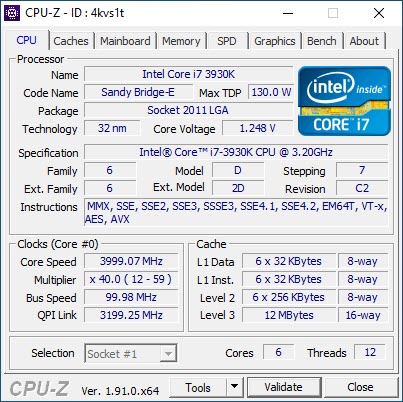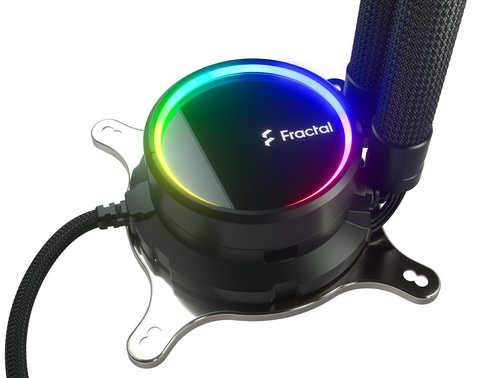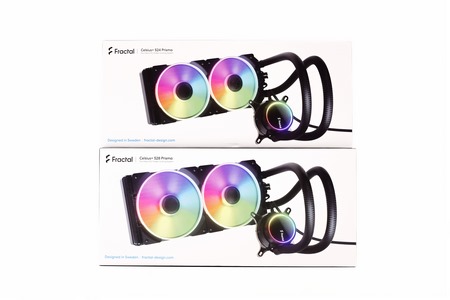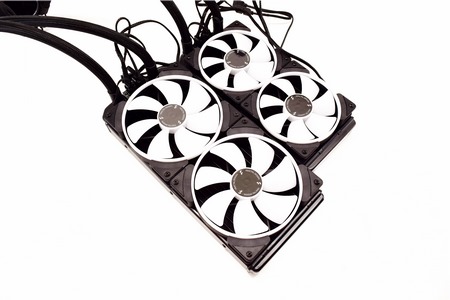INTRODUCTION

Ever since i got my hands on a AIO liquid CPU cooler (if memory serves me right i think it was the Domino A.L.C by CoolIT systems) just over a decade ago it became clear to me that their introduction meant that liquid cooling would not be considered "niche" for much longer. On top of that even though back then cooling efficiency wasn't really anything to get excited over (always compared to some of the air coolers released at that time like the NH-D14/V8/V10 models) unlike air-cooling there was obviously much more room for improvement. Today the market is filled with AIO liquid coolers and since one of the most popular lines as i type these lines is no other than the Celsius+ Prisma by Fractal Design after testing their quite impressive S36 tri-fan model (review here) today I’ll be testing their S24 and S28 dual-fan models.
Fractal Design is a leading designer and manufacturer of premium PC hardware including cases, cooling, power supplies and accessories. Based in Gothenburg and with offices in the US as well as Taiwan, Fractal Design has gained a global reputation for innovative design, elegant aesthetics and solid build quality. Fractal Design products are available in over 45 countries worldwide, and are still growing.
Just like with the S36 model the Celsius+ Prisma S24 and S28 models are also most likely manufactured by one of the leading companies in the field, Asetek. Now leaving out the Celsius+ Prisma S36 both the S24 and the S28 feature aluminum radiators with the same FPI count (21FPI), the same 400mm long sleeved tubes and the same ceramic pump that can reach speeds of up to 3500RPM with a maximum pressure of 1.46m H20 and up to 20dBA of noise. What changes between both models is obviously the size of the radiator (284x122x31mm for the S24 and 324x143x30mm for the S28) and the fans used so Fractal Design has paired the S24 model with two AL-12 PWM RGB fans (120mm/2000RPM/85.71CFM/2.78mm H2O/32.7dBA) and the S28 model with two AL-14 PWM ARGB fans (140mm/1700RPM/103.9CFM/2.38mm H2O/34.1dBA). Needless to say, the ARGB system is pretty much identical for all 3 models so aside the ARGB controller found on the radiator they feature the same 6 addressable RGB LEDs beneath the glass top of the pump/base combo and 6 addressable ARGB LEDs on each of their fans (fully compatible with all the major motherboard sync technologies including Gigabyte Fusion, ASUS Aura, Razer Chroma, MSI Mystic Light and ASRock Polychrome). As pointed out in the S36 review the entire Celsius+ Prisma line is covered with the same 5-year limited warranty.
SPECIFICATIONS AND FEATURES

PACKAGING AND CONTENTS
Both the Celsius+ Prisma S24 and S28 models arrive in identical boxes that have a large product picture at the front right beneath the company logo.
Two drawings used to showcase the size of the radiators and the socket compatibility list are all printed on the left side.
The product features are also printed at the base of the box in 4 languages.
A full product drawing can be seen at the rear right next to the main product features.
Same packing as with the Celsius+ S36 Prisma so both the S24/S28 are placed inside plastic bags and in a formed piece of cardboard.
Each AIO is shipped with two Prisma PWM ARGB fans (120mm for the S24 and 140mm for the S28), pump ARGB cable, fan and radiator mounting screws, user guide, warranty/support information paper, backplate and all the required hardware to mount the cooler onto Intel LGA1150/1151/1155/1156/1366/2011/2011-3/2066 and AMD AM2/AM2+/AM3/AM3+/AM4/FM1/FM2/FM2+ motherboards (the cooler also supports mounting on sTR4 mainboards via the included bracket found in the CPU bundle - also made by Asetek).
THE CELSIUS+ S24 & S28 PRISMA
Both the Celsius+ Prisma S24 and S28 look almost identical (and with the S36 of course).
In terms of thickness both aluminum radiators are pretty much identical (according to my measurement tool the S28 radiator is slightly thicker).
In size however whereas the aluminum radiator of the S24 measures 284mm in length and 122mm in width that of the S28 measures 324mm in length and 143mm in width.
As mentioned earlier both radiators feature the same FPI (fins per inch) number of 21.
I was a bit surprised to see that even though the radiator of the S24 model has fin protective plates beneath the screw/mounting holes (just like the S36 model) the radiator of the S28 does not (to be honest it doesn't have to since water ducts are located not under the mounting holes in 140mm wide radiators - still protecting the fins would also look nice).
Between the two fittings we find the same 3-way ARGB fan hub as with the S36 model.
Both models feature 400mm long sleeved tubings which should more than enough even for use in full towers.
The pump/base combo features a glass top and 6 addressable RGB LEDs right beneath it (rotate the top to switch from Auto to PWM mode - as with my review of the S36 i recommend using PWM mode for the best results).
A 3-pin ARGB header is located on the left side of the pump.

 As with the Celsius+ Prisma S36 the sleeved tubes of both the S24 and S28 models can rotate up to 90+ degrees from the base.
As with the Celsius+ Prisma S36 the sleeved tubes of both the S24 and S28 models can rotate up to 90+ degrees from the base.
Both copper coldplate bases come ready with a thin layer of thermal conductive material (which i always remove for my tests).
The AL-12 PWM RGB fans (120mm/2000RPM/85.71CFM/2.78mm H2O/32.7dBA) and the AL-14 PWM ARGB fans (140mm/1700RPM/103.9CFM/2.38mm H2O/34.1dBA) are quite similar and all feature rubber pads on all 4 ends.
Here you can see the difference in size between the Celsius+ Prisma S24 and S28 models far more clearly.
With their fans mounted both AIOs now measure roughly 55mm in thickness.
TEST BED


TESTING METHODOLOGY
Testing complete water cooling kits or individual radiators is no different than testing CPU Coolers and since we want all of you to be able to compare similar products, we created new and separate charts (you can still cross-compare results however since we are using the same test rig). So once again single (120/140mm) watercooling solutions are tested with the radiator mounted at the rear of our test rig while dual/triple/quad (240/260/280/360/420/480/560mm) solutions with the radiator mounted at the top. For the dBA tests complete water cooling kits or radiators with bundled fans are measured both while on idle mode or with the fan controller in the minimum setting and while on extreme load or with the fan controller all the way to the highest possible setting (PWM fans do that on their own without our intervention). Every single test takes place in a temperature controlled room of 23 degrees Celsius Ambient Temp with the help of two AC units placed diagonally inside the room. Finally, much like when testing CPU Coolers it's very important to point out that just because a water cooling kit outperforms another when tested with our test rig (when we test complete water cooling kits) that does not necessarily mean that the same performance differences will apply 100% for other CPU models and in other situations (such as different ambient temps and system configurations).
To successfully record the load temperatures, we use the latest OCCT application for around 6-10 minutes to push the processor to its limits and after that is done and the temperatures are recorded, we wait for about 10-20 minutes for the CPU to cool down and record the idle temperatures. This is done to allow time for the thermal conductive material to achieve the optimal performance level. Same procedure is then repeated with the Passmark BurnIn Test as a failsafe just in case the OCCT results are wrong. This procedure takes a lot more time than the usual peltier/thermometer tests but this way not only can we deliver real world results to our readers based on real CPUs but we can also triple check the results using a variety of programs. Last but not least the temperatures were recorded using both the latest versions of AIDA64 and RealTemp while the noise level tests (when fans exist in the bundle) are performed using a high precision ExTech HD600 Decibel Meter placed about 10-15cm above the radiator. Still although the same testing procedure applies to all units do take into consideration that unlike the official numbers which are measured in special noise isolated labs with just the fans here, we also have both the rest of the cooler and the rest of the system (although all system fans are turned off when recording noise levels).
TEST RESULTS


CONCLUSION

One of the things that I didn’t really expect when testing both the Celsius+ Prisma S24 and S28 models by Fractal Design was the significantly lesser noise levels compared to the S36 (roughly 8.5dBA less for the S24 and 7.5dBA less for the S28) which are also what makes them far more ideal for people who do care about this. Cooling efficiency on the other hand was much closer than expected with the S28 probably delivering the best price/performance ratio of the three. As for the ARGB feature this i can’t comment on since the motherboard of the I7-3930k test rig has no support for it and I don’t happen to have a compatible controller. Still i did plug the S36 model with my X299 test rig when i reviewed it and the result was quite impressive so this easily applies here as well (just with 2 fans instead of 3).
With a current price tag for the Celsius+ S24 Prisma set at USD168.94/148Euros (Amazon.com/Amazon.co.uk) and for the Celsius+ S28 Prisma set at USD170.99/161.70Euros (Newegg.com/Amazon.de) it’s again clear that the latter offers the best bang for your buck. Overall however both Celsius+ Prisma models (and the S36 of course) deliver on exactly what Fractal Design markets them for, great looks and near-excellent cooling efficiency which is why they all deserve our Golden Award.

PROS
- Build Quality
- Almost Excellent Cooling Efficiency
- ARGB Lighting (Compatible With Gigabyte Fusion, ASUS Aura, Razer Chroma, MSI Mystic Light and ASRock Polychrome)
- Up To Four 120/140mm Fans In Push & Pull
- PWM & Auto Mode
- Integrated ARGB Fan Hub
- 400mm Long Sleeved Tubes
- 5 Year Limited Warranty
- Noise Levels
CONS
- Wide Radiator (S28)
- No Fin Protection Plates (S28)

 O-Sense
O-Sense































.png)

